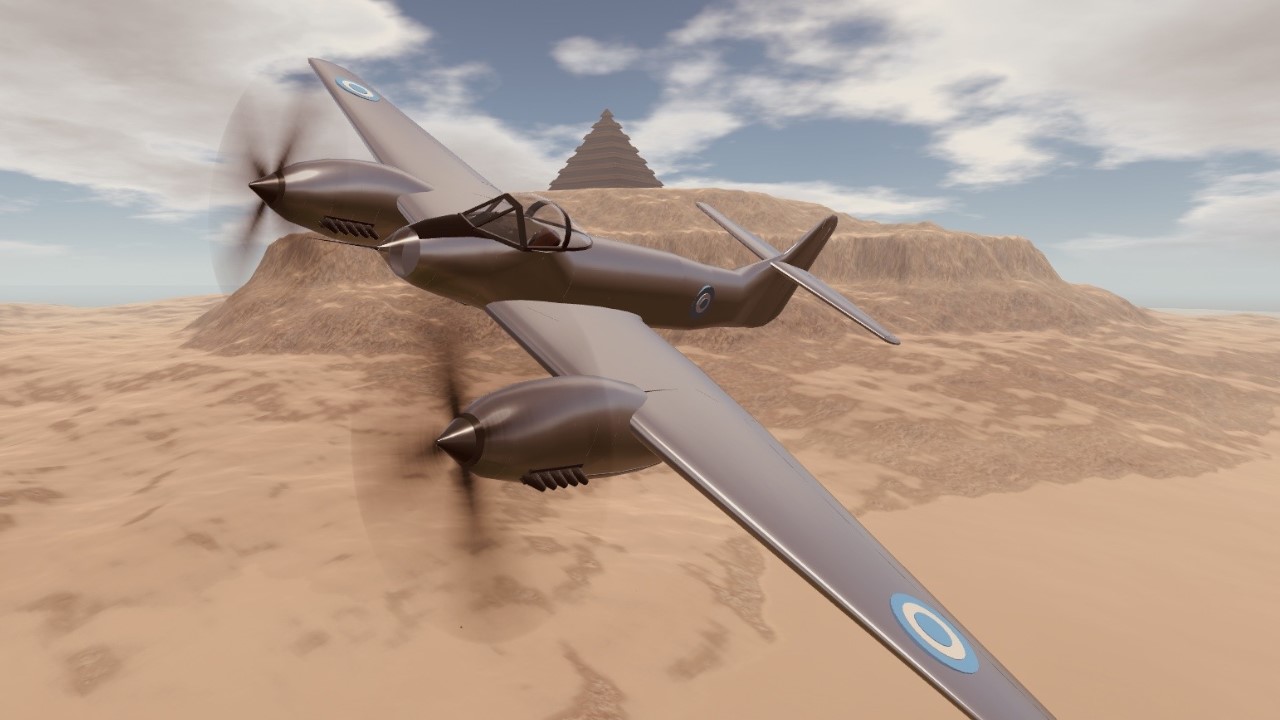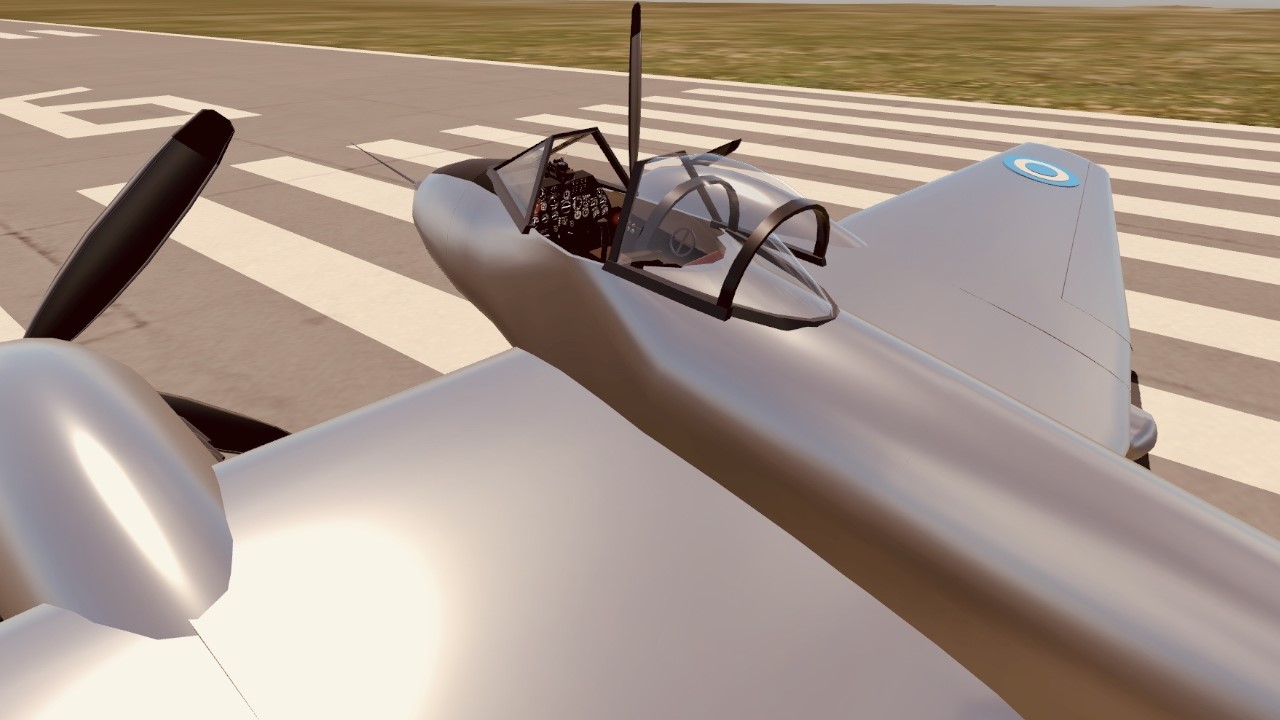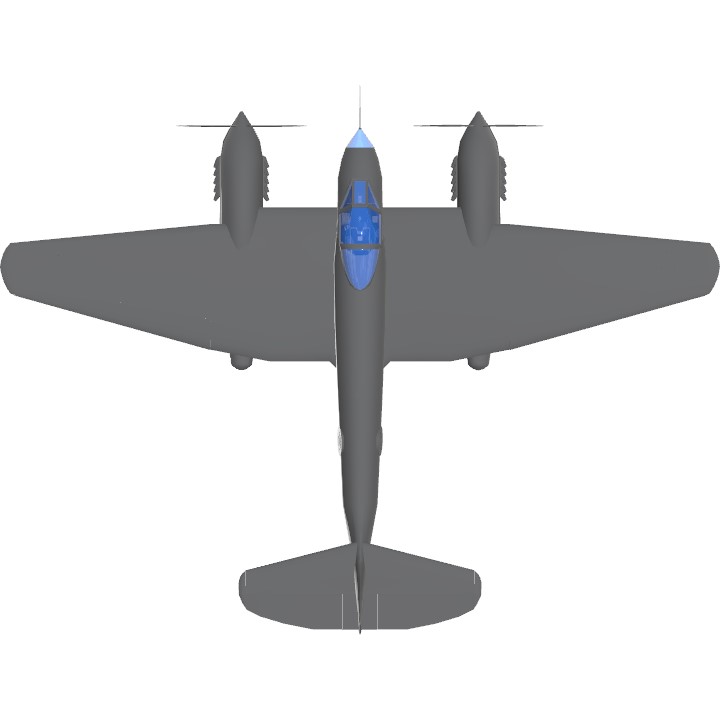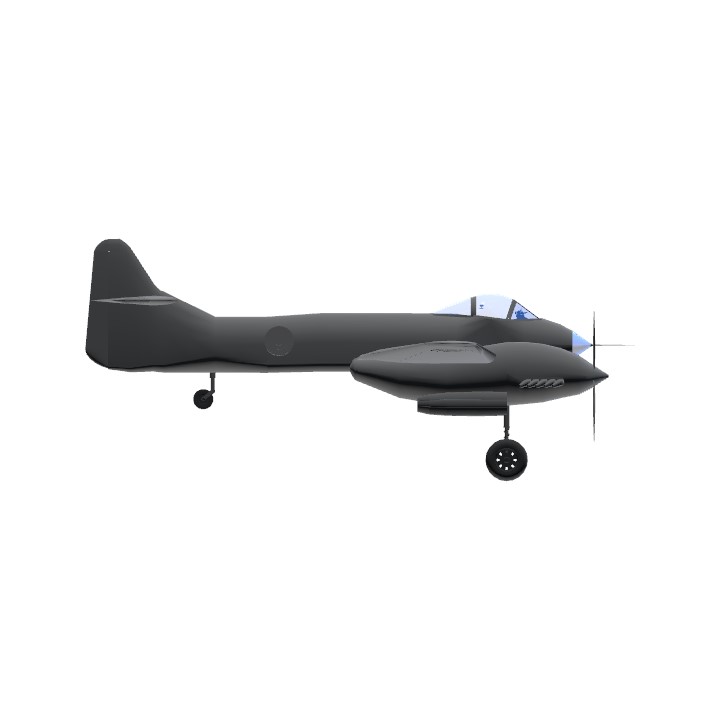Fábrica Militar de Aviones, Instituto Aerotécnico 30, Ñancú
-At last you died son of a *…-
-Navarro, you got 15 days of arrest!!

The New Stuff:
Mainly, the design got a lot smoother and optimized
The cockpit got new things such as a clock, a homing indicator and other little things
And finally, structure issues such as tilting and engine performance are gone for good!
The Important Stuff:
To use the homing indicator only kick VTOL up and try to get the needle indicator straight, and it will guide you up to land
The engines ACTUALLY stop working after 8000 meters of altitude are surpassed, keep an eye on the altimeter, the risk of stalling is present
History:
In November 1946 Italian engineer Cesare Pallavicino was tasked with designing a twin-engine fighter to escorts the then in service Lancaster bombers of the Argentine Air Force.
Three designs were presented – two jets and a third with piston engines. The piston fighter was then included in the First Five Year Plan and given great importance.
The design, similar in concept to the german Zerstörer was somewhat like the De Havilland Hornet and adapted some of the lessons Pallavicino learned while designing for the Regia Aeronautica in WW2, got baptized as “Ñancú”, the name of a Patagonian eaglet.
Captain Edmundo Osvaldo Weiss flyed it for the first time the 18th of July 1948 and was presented to the public alongside the IAe-27 Pulqui I on December of the same year, going on its own from Cordoba to Buenos Aires at a speed of 650 kph using only 60% of its throttle, an unbroken record on piston planes in south American industry.
Sadly, this apparatus did not enter into service because the research focus went into jet planes such as the I.Ae 33 Pulqui II and the I.Ae 30.
Even though, the only built prototype was destroyed in a landing accident during a test with captain Carlon Fermin Bergaglio, the pilot miscalculated the moment to stall and land the plane, resulting in the aircraft rolling and crashing with the cockpit grounded and upside down.
Bergaglio was an officer characterized by his tough and bad character, lacking any sympathies in his subordinates. During the accident all engineers went to the crashed machine and a subofficer came with a shovel to exhume the canopy, and at the first shovelful he said:
-At last you died son of a *-
Unexpectedly, a voice coming oufrom the plane has heard who said:
-Navarro, you got 15 days of arrest!!-
Captain Bergaglio escaped without a scratch from the accident!

Features:
• Interactive Cockpit
• Gyroscope
• Fastest South-American propeller plane ever made
Controls:
• Regular controls
• AG1: Open canopy
• AG3: Switch between reflex and ironsights
• AG4: Gyro

Geometric data:
Length: 11,5 mts
Wingspan: 15 mts
Wing Area: 35 mts
Height: 5,1 mts
Technical data:
Powerplant: x2 Rolls-Royce Merlin 134/135 V12 with 4 blades of 3,66 and 2035 HP each
Maximum Speed: 780 kph (registered at 100% throttle at 7648 mts during tests with no wind), although it can go faster with favorable wind), in diving it can surpass 900 kph
Landing Speed: anything between 100 and 150 kph will work, but 120 is recommended to avoid stalling and the risk of not being able to land and stop
Cruising Speed: 648 kph
Service Ceiling: 8.000 mts
Range: 2700 km
Weapons: x4 Hispano-Suiza 20mm MKV autocannons
Variants:
Variant with groundstrike capacities, armed with one 500 kg bomb and 10 83mm rockets
Credits:
SimplyPlain for his Fw-190D tail which helped with structural failures
ollielebanania for cockpit instruments present in his Focke-Wulf Ta-152
FalcoOne for very important technical asistance through The Speedbird Hangar
11qazxc for the engines FT code that forces the service ceiling
Gallery:




Specifications
Spotlights
- This craft is curated
- Yuukahayasekawai 3.8 years ago
- 929 3.5 years ago
- PrussianAirWorks 5 months ago
General Characteristics
- Created On Windows
- Wingspan 49.4ft (15.0m)
- Length 37.7ft (11.5m)
- Height 16.6ft (5.1m)
- Empty Weight 12,040lbs (5,461kg)
- Loaded Weight 17,323lbs (7,857kg)
Performance
- Horse Power/Weight Ratio 0.234
- Wing Loading 38.8lbs/ft2 (189.5kg/m2)
- Wing Area 446.4ft2 (41.5m2)
- Drag Points 6186
Parts
- Number of Parts 649
- Control Surfaces 2
- Performance Cost 2,519







Nice Design- as a argentinian a like much this aircraft
Nice!